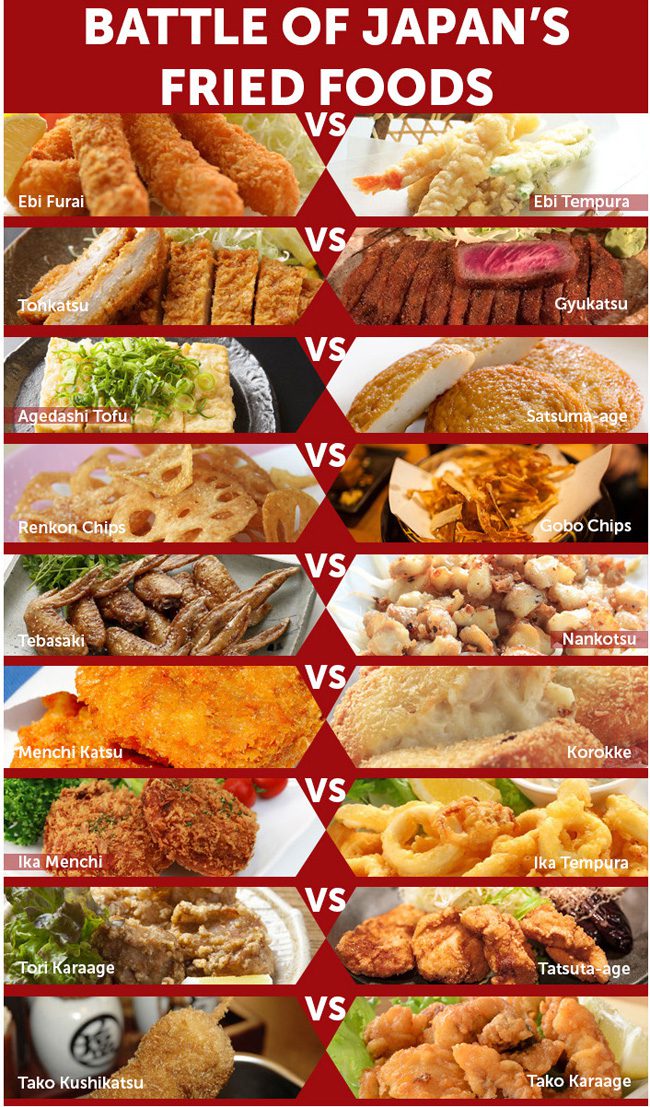Chinese cuisine is characterized by bold, varied flavors and cooking techniques such as stir-frying, braising, and steaming, while Japanese cuisine is known for its simple, fresh taste and grilling, steaming, and deep-frying techniques. Chinese cooking often incorporates soy sauce, ginger, and garlic, while Japanese dishes use fresh, high-quality ingredients such as seafood, vegetables, and rice, and commonly include soy sauce and mirin. Chinese cuisine reflects cultural influences from neighboring countries such as Korea, Vietnam, and Japan, while Japanese cuisine is influenced by Buddhism, with a focus on mindful eating, and Japanese Zen philosophy in presentation.
Chinese vs. Japanese Cuisine: A Battle of Techniques and Taste
Introduction
Overview of Chinese and Japanese Cuisine
Chinese and Japanese cuisines both have a long and fascinating history, and both are considered to be some of the most popular and loved cuisines in the world. However, these two cuisines are quite different from one another, with each having its unique taste, techniques, and ingredients.
Japanese cuisine is known for being simple, fresh, and delicate, while Chinese cuisine is known for being bold, varied, and flavorful. The difference does not just lie in the taste, but also in the cooking techniques, presentation, and even the history behind these two cuisines.
This article aims to compare and contrast these two amazing culinary traditions in terms of their taste, techniques, and cultural influences.
The Cooking Techniques
Chinese Cooking Techniques
Chinese cooking techniques are varied and complex, making this cuisine one of the most diverse and delicious in the world. The Chinese method of cooking involves stir-frying, braising, steaming, and roasting. Stir-frying is the most common method used in Chinese cooking, which involves heating a wok or pan at high temperatures, followed by tossing the ingredients with oil and seasoning.
Braising is another Chinese cooking technique that involves simmering meat or vegetables in flavorful sauces for a long period, giving the dish a rich and intense taste. Steaming is also a popular Chinese cooking technique, which is often used to cook dumplings, buns, and fish.
Japanese Cooking Techniques
Like Chinese cuisine, Japanese cuisine has its unique cooking techniques that define its taste and style. Japanese cooking methods involve grilling, steaming, simmering, and deep-frying. Grilling is one of the most popular Japanese cooking techniques, which is often used to cook fish, meats, and vegetables.
Simmering is another Japanese cooking technique, which involves gently heating a mixture of ingredients in a broth, giving the dish a rich and umami taste. Deep-frying is also a popular Japanese cooking technique, which is often used to cook tempura, a dish made up of battered and fried seafood or vegetables.
The Ingredients
Chinese Ingredients
Chinese cuisine is known for its use of ingredients such as soy sauce, ginger, garlic, and black bean sauce, which give the dishes a strong and bold flavor. Popular Chinese dishes include Kung Pao chicken, beef and broccoli, and dumplings, which are made up of meat and/or vegetable fillings.
Chinese cuisine also uses rice as a staple food, along with noodles, which can be made from wheat, rice, or starch. Herbs and spices such as Szechuan pepper, star anise, and cilantro are also popularly used in Chinese cuisine.
Japanese Ingredients
Japanese cuisine is characterized by the use of fresh and high-quality ingredients such as seafood, vegetables, and rice. Soy sauce and mirin, a sweet rice wine, are often used in Japanese cuisine to add flavor to dishes.
Sushi, which is one of the most popular Japanese dishes, is made with vinegared rice, raw fish, and vegetables. Japanese cuisine also uses seaweed, tofu, and miso paste, which is a fermented soybean paste, as popular ingredients.
The Taste
Chinese Taste
Chinese cuisine is famous for its rich and intense flavor, which is often a combination of sweet and savory. The dishes are also infamous for being spicy, with Sichuan cuisine being one of the spiciest in China. Chinese dishes often have a heavy and oily texture, making them filling and satisfying.
Japanese Taste
Japanese cuisine is known for being light, fresh, and subtle in flavor. Japanese dishes often have a clean and delicate taste, which allows the natural flavors of the ingredients to shine through. Japanese cuisine also incorporates the concept of umami, which is a savory taste that comes from ingredients such as mushrooms, soy sauce, and fish.
The Cultural Influences
Chinese Cultural Influences
Chinese cuisine has a rich and diverse history, with many regional cuisines that reflect different cultural influences. Chinese cuisine is heavily influenced by Traditional Chinese Medicine, which uses ingredients such as ginger, garlic, and soy sauce for their medicinal properties.
Chinese cuisine is also influenced by the cuisine of neighboring countries such as Korea, Vietnam, and Japan, which have influenced some dishes such as jajangmyeon, a Chinese-Korean noodle dish, and Vietnamese spring rolls.
Japanese Cultural Influences
Japanese cuisine is heavily influenced by the country’s geography, climate, and traditions. The use of fish and seafood in Japanese cuisine is influenced by the country’s many islands and coastal regions. Japanese cuisine also draws influence from Buddhism, with many vegetarian dishes and a focus on mindful eating.
Japanese cuisine is also known for its presentation, with dishes being arranged in an aesthetically pleasing manner, which reflects the influence of Japanese Zen philosophy.
Conclusion
In conclusion, Chinese and Japanese cuisines are both remarkable culinary traditions with their unique tastes, techniques, and cultural influences. While Chinese cuisine is known for its bold flavors and complex techniques, Japanese cuisine is known for its delicate taste and simple presentation. Understanding the differences and similarities between these two cuisines and appreciating their unique characteristics can help us appreciate and enjoy them even more.
